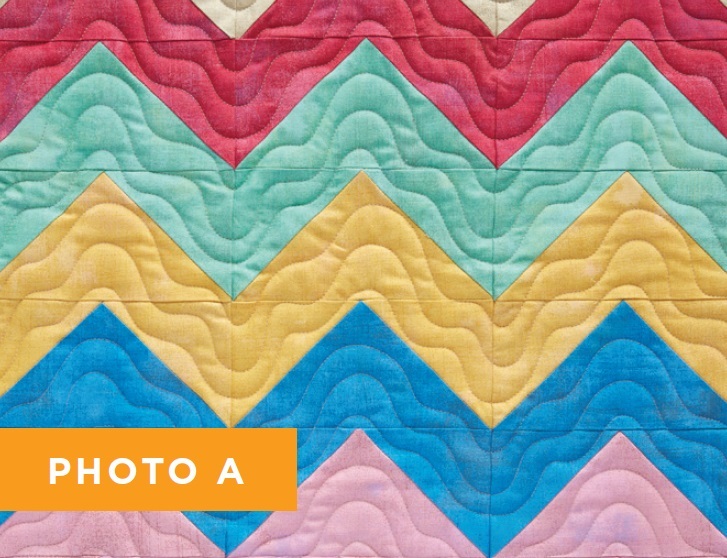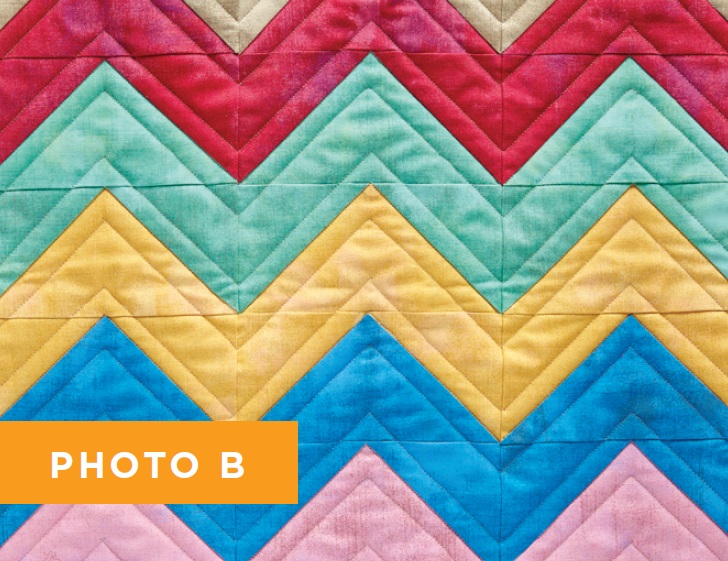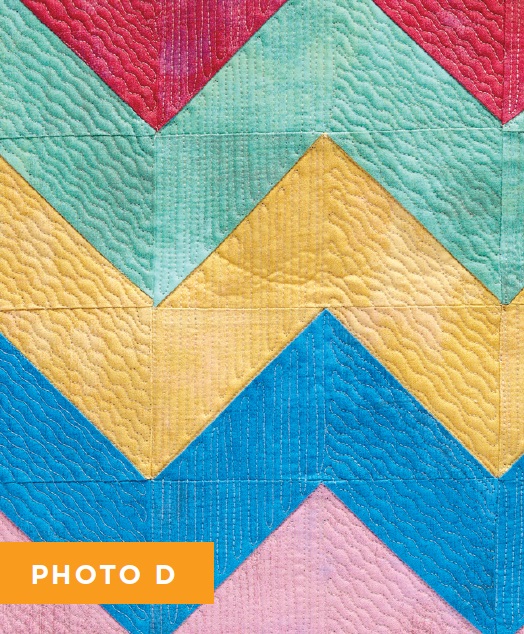Quilting the Quilt: How much quilting is too much?
When it comes to quilting, is it possible to have too much of a good thing? That’s a great question, and the answer is not absolute.
You’ve probably noticed that the quilting on some competition quilts is more intricate than the piecing. It’s as if the pieced quilt has become a blank canvas to the quilter, and the quilting stitches are brushstrokes that fill every square inch of that blank canvas. This approach to quilting turns that piece into a fabulous work of art—it’s spectacular, masterful, and stunning, but not very snuggly. Quilt show viewers frequently make statements like, “It sure is pretty, but it’s too fancy to use as a quilt.”
Well, of course it’s a quilt! It’s like having dress clothes and everyday clothes. We put on our “Sunday best” clothes when we want to look special, but in our “everyday” clothes we are comfy. If we are lucky enough to have clothes that are both dressy and comfortable, life is good!
Quilts can fall into those same categories. Some quilts are everyday quilts. They are really meant to be comfortable and snuggly. We realize that means their lifespan may be shorter, and we aren’t as concerned about perfection as long as they serve their purpose well. Other quilts are at the opposite end of the spectrum where we stress for perfection with every stitch. And there are quilts that fall somewhere in the middle—they may have special quilting to bring out details or highlight parts of the quilt, but they also remain useable, touchable, and comfortable.
Whether a quilt has too much quilting or not enough goes beyond visual appeal alone. The batting type you choose dictates how far apart your quilting lines can be to safely hold the layers together and prevent the batting from shifting and bunching. If the package states the quilting distance is 10 inches, then that batting is pretty stable. You can get away with minimal quilting while still having a quilt that won’t fall apart after the first wash. But it also means that same quilt could be stiff if you added lots of quilting to it thanks to the batting’s stable properties. If “soft” and “cuddly” are two adjectives you want to describe your quilt, go for batting that requires the stitching to be a bit closer.

If you want your comfy quilt to also be your warm quilt, then you’ll want to choose batting with a little loft (perhaps with wool or polyester in it to trap body heat). This type of batting also drapes very nicely compared to some heavier, dense cotton battings. I used Hobbs 80/20 batting in the samples shown.
With less-dense quilting, the piecing often becomes the most dominant design element and the quilting takes backstage. For example, I chose to follow the zigzag shapes (Photo B) by stitching in the ditch between colors, and adding just one more line parallel to the seams to highlight all the angles.

Keeping the quilting lines farther apart creates air spaces that form insulation pockets to keep you toasty. The quilting in Photos A, B, and C all maintain some air space; those would keep me warmer than the quilt in Photo D where I’ve eliminated most of the air space with close quilting.
If you want quilting to accent or highlight parts of the quilt and share the stage with the piecing, then remember that contrast is what pleases the eye.
The texture created by closely spaced quilting lines next to more open spaces draws attention to that area of the quilt. This subtle variation in density can create movement, showcase negative space, or highlight specific design elements. Well-placed quilting designs can direct your focus right where you want it. With this style of quilting the piecing and quilting complement each other without either trying to take center stage. Still using a wardrobe analogy, this quilting style may be described as “business casual.” The quilting has some flair and polish but it’s still okay to sit on the quilt.

Heavy quilting on projects doesn’t necessarily mean that the quilt falls into our “formal attire” category. Modern quilting styles like matchstick quilting where quilting lines are extremely close add lots of texture but may or may not be formal to the maker (Photo D). Many quilters use intense quilting density, thread color,and thread thickness to add a layer of complexity to the project that definitely sets it apart from a comfy quilt.

If you’re entering the quilt in a competition, then the question of “How much quilting is too much?” becomes a question the judges have to decipher. In addition to all the aspects of the piecing and finishing, they will look for design balance, consistent quilting density, good thread color choice, and proper stitch and design execution. Just remember, whether we’re talking about quilting density or delicious chocolate, the only person you have to please is yourself!



